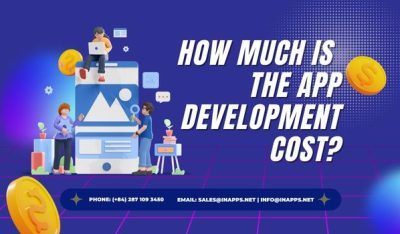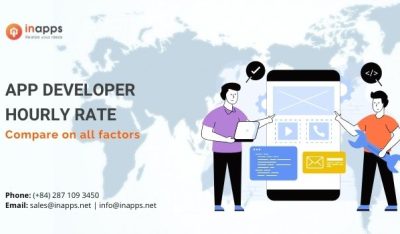- Home
- >
- Mobile apps development
- >
- Step By Step Guide Of Mobile App Development Process
Anybody thinking of Mobile app development knows it takes a lot of time and effort to do so. Recent advancements in technology have made it a little easier, but there are a few steps you need to know for your app to flourish.
In this article, we’ll talk you through all the necessary steps from coming up with an idea to taking the final plunge and releasing it into the marketplace. By tracking with these simple to-adhere to rules, any amateur can begin making their little glimpse of heaven.
While the growth and number of mobile users and apps are soaring, there are still some valid fears and concerns people, especially entrepreneurs, have about building a mobile app.
If you are eager to design your own mobile app, why not give this article a read? The best way to get started is to first research the market for your idea, then ensure that it’s feasible and worth pursuing.
You’ll also need to choose which device you’ll develop the app for – Android or iOS/iPhone – and even set up your design wireframe before really getting down to business!
The mobile app development process is confusing to some and simultaneously a continuous action to date. This article is quintessential in providing you with a Guide to the complete Mobile App Development Process Guide.
Key Summary
This article from InApps Technology, authored by Phu Nguyen, provides a comprehensive guide to the mobile app development process, outlining the steps from ideation to market release. It emphasizes the importance of market research, prototyping, and choosing the right platform, while highlighting top frameworks and companies to streamline development. The guide addresses common concerns and offers insights into creating successful mobile apps for Android, iOS, and cross-platform environments.
- Context:
- Mobile App Growth: The increasing number of mobile users drives demand for apps, but development remains complex and time-intensive.
- Purpose: The article serves as a roadmap for entrepreneurs and developers to navigate the mobile app development lifecycle, ensuring market-relevant, high-quality applications.
- Mobile App Development Process:
- Stages:
- Pre-Development: Research the market, validate the idea, and assess feasibility to ensure the app meets user needs.
- Development: Includes prototyping (low and medium fidelity) and coding the application.
- Testing: Continuous testing to identify and fix bugs, ensuring reliability and functionality.
- Post-Development: Final refinements, market release, and ongoing maintenance.
- Prototyping:
- Low-Fidelity Prototypes: Basic mock-ups to outline user interaction and workflows.
- Medium-Fidelity Prototypes: More detailed mock-ups to test UX design without full functionality.
- Benefits: Early testing of design and usability, allowing feature adjustments before full development.
- Key Considerations:
- Choose the platform (Android, iOS, or cross-platform).
- Create design wireframes to map out the app’s structure.
- Tailor the app to specific market and user needs for optimal adoption.
- Stages:
- Mobile App Development Platforms:
- PhoneGap (Apache Cordova): Uses CSS3, HTML5, and JavaScript for cross-platform apps (Android, iOS, Windows, web) with a single codebase.
- Felgo (V-Play Engine): Supports cross-platform mobile games and apps, compatible with iOS and Android, with robust IDE integration.
- Flutter: Google’s SDK for high-performance apps across iOS, Android, web, and desktop, built on React and a single codebase.
- Appy Pie: No-code platform with a visual builder (Ionic Studio) for creating apps without programming expertise.
- Xamarin: Microsoft’s framework for building native-like apps for Android, iOS, Windows, and more, using .NET and Visual Studio.
- Benefits of Cross-Platform: Cost savings, single codebase, and broader reach across platforms.
- Development Approaches:
- Native Development: Platform-specific (e.g., Swift for iOS, Java for Android) for optimal performance and native look/feel.
- Hybrid Development: Uses frameworks like Ionic, React Native, Flutter, or Xamarin for cross-platform compatibility, balancing cost and performance.
- Web Development: Progressive web apps for broader accessibility but potentially lower performance.
- Factors: Choice depends on business needs, app requirements, developer skills, and timeline.
- Top Mobile App Development Companies:
- Rightpoint: Multi-talented team focusing on empathy-driven design, leveraging AI, IoT, and AR/VR for web and mobile apps.
- VironIT: Delivered 500+ projects, offering customized solutions in JavaScript, Java, PHP for industries like sports, healthcare, and retail.
- Codersera: Specializes in integrated software development, including mobile and web apps, with tailored solutions and digital transformation expertise.
- HestaBit: Serves clients like the Bill and Melinda Gates Foundation, focusing on smart technology solutions for startups and enterprises.
- Net-Craft.com: Scottsdale-based company offering mobile app development and results-driven SEO and social media marketing.
- InApps Insight:
- InApps Technology, ranked 1st in Vietnam and 5th in Southeast Asia for app and software development, excels in delivering cross-platform and native mobile apps.
- Leverages React Native, ReactJS, Node.js, Vue.js, Microsoft’s Power Platform, Azure, Power Fx (low-code), Azure Durable Functions, and GraphQL APIs (e.g., Apollo) for robust solutions.
- Offers outsourcing services for startups and enterprises, with expertise in Ionic, Flutter, and Xamarin, ensuring cost-effective, high-quality apps at 30% of local vendor costs.
- Supported by Vietnam’s 430,000 software developers and 1.03 million ICT professionals.
- FAQs:
- Cost: Varies based on app complexity, features, and vendor rates.
- Cross-Platform Development: Apps written in one language and compiled for multiple platforms (e.g., Flutter, Ionic).
- Best Framework: Depends on client needs; Flutter and React Native are popular for performance and flexibility.
- Future Trends: Continued growth in 2022, with advancements in AI, IoT, and cross-platform frameworks shaping app development.
- Call to Action:
- Contact InApps Technology at www.inapps.net or sales@inapps.net to explore mobile app development services, from ideation to deployment, tailored to your business needs.
Mobile App Development Process

Once you understand the key processes and stages of the mobile app development life cycle, you can better prepare to develop applications with the features and functions you want, as well as budgets and schedules that you can easily manage.
Building a portable application sounds overwhelming and troublesome, yet when the work is underway, each individual from the development group knows their work, and all runs are completed inside the setup objectives, you can be certain that your versatile application will become important.
A successful product on any selected mobile platform. Building a mobile application can be as simple as opening an IDE, putting something together, doing a quick test, and submitting it to the App Store-all of which takes half a day.
The mobile app development process requires several different prototypes – throughout the process, you will have to test every step of the way.
Medium fidelity prototypes are a little more complex than low fidelity prototypes, but these are not real applications yet.
Basically, a medium-fidelity prototype is a mock-up that allows your testers to somehow become familiar with UX design and present their products without having to develop a fully functional application.
Prototypes are very useful for modeling the user interaction and application workflows expected from the finished product.
While prototyping can be tedious, it is definitely justified as they offer early testing of the plan and usefulness of your applications. Prototypes help you identify changes to features offered by applications.
Some mobile app development companies even prefer to create prototypes during the wireframing phase, especially when the functional requirements of the application are not thought out to the smallest detail.
For example, the testing phase might include some development to fix bugs. In addition, work can be scheduled on time and thus avoid unnecessary delays in project completion. Development can be divided into two phases:
- Prototyping
- Coding the application.
Understanding your specific market and users will help you create an application tailored to what they really need. Follow the instructions in this guide and you will ensure that you are developing a product that is ideal for the market. We’ve never shared such a comprehensive, comprehensive guide for current and future app owners.
Mobile App Development Platforms
Having established itself as the undisputed leader in mobile app development, the platform has expanded its reach with a variety of products that are equally easy to use.

These designer devices are great for building portable applications without any preparation and surprisingly offer cross-stage usefulness to contact a more extensive crowd. Let’s look at these mobile app platforms :
PhoneGap
PhoneGap, otherwise called Apache Cordova, is an open-source portable application advancement system that utilizes CSS3, HTML5, and JavaScript to fabricate local applications for Android, Windows, and iOS.
Applications created on the Ionic stage can be utilized on various stages, like Android, iOS, work area, and the Web with a solitary codebase. In addition, this mobile app development software also allows developers to create platform-specific versions of various native application components by easily using a single code base across multiple platforms.
Felgo
Felgo, in the past known as the V-Play Engine, is a famous cross-stage development climate used to make versatile games and applications.
It offers broad help for IDEs and other portable application improvement apparatuses and permits you to make local applications for iOS and Android stages. It is broadly used to assemble cross-stage and local portable applications for buyers and organizations.
Flutter
Flutter is a software development kit that permits you to fabricate applications with high performance on an assortment of stages like iOS, Android, the web, and work areas from a solitary codebase.
It is based on React, the best-in-class JavaScript library for building user interfaces, and targets mobile platforms.
Appy Pie
Appy Pie is a product stage that permits you to foster your own applications without the requirement for coding.
There are various simple to-utilize choices and apparatuses to make the necessary application. The system includes App Builder / Ionic Studio, a visual development environment used to create functional applications.
Xamarin
With Xamarin Developers, you can fabricate your own applications with help from a functioning local area for Android, tvOS, watchOS, iOS, macOS, and Windows.
Microsoft Visual Studio Xamarin allows you to fabricate applications for a very long time like Windows, iOS, and Android utilizing a solitary .NET code.
The best part of Xamarin’s cross-platform tools is that all applications based on it have the look and feel of a native application because it uses a native interface that works the way users want.
Application programming designers likewise need to consider a wide scope of screen sizes, details, and equipment arrangements because of the savage contests in mobile software programming and changes on every stage.
With this evolution, there has been a major paradigm shift in mobile app development trends in terms of code, scripting, platforms, integration, development, and distribution methods.
As technology continues to evolve, the capabilities and capabilities of machine learning are expanding to provide additional layers of information and communication in your digital services.
Comparison of App Development Alternatives
The stage associations needed to create, convey and oversee portable applications contain a huge number and devices that empower an engineer to compose, test, and send applications in an objective stage climate.
The choice between web development, native development, and hybrid development depends on a number of factors, including business needs, application requirements, developer skills, and time.
Remember that while building applications is expertise by its own doing, creating for explicit businesses (like medical care or games) can be specific. The easiest way to determine if a given software can be used to develop your application is to evaluate its portfolio.
To reduce the time spent searching on Google, which can be tedious, we have selected companies with a proven track record and diversified portfolio for you.
This is where most large app companies can write code for iOS, Android, Windows Mobile, or switch to cross-platform platforms and build mashups.

We inspected the force of their UX/UI plan and their eagerness to fiddle with new advancements like wearables, expanded reality, computer-generated reality, blockchain, Amazon Alexa, and conversational bots.
For quite a while, organizations wishing to foster portable applications needed to have two groups, one of which was produced for iOS and the other for Android.
Hybrid frameworks and transpilers existed, however, they failed to measure up to what in particular could be accomplished by building applications in any case. Lately, these structures have started to make up for a lost time in elements, usefulness, and execution.
Once you start thinking about the mobile app development process, you come across terms like a native app, mashup, cross-platform, and technologies like Xamarin, Ionic, ReactNative, etc. We’ll look at various frameworks and approaches for rendering your small screen apps:
Ionic Creator
Ionic Creator is a visual proofreader that permits designers to rapidly model portable applications utilizing intuitive.
Ionic is one of the amazing HTML5 SDKs that fundamentally permits you to foster regular inclination portable applications utilizing state-of-the-art advances like HTML, CSS, and Javascript.
Applications created on the Ionic stage can be utilized on numerous various stages like Android, iOS, Desktop, and the web with a solitary codebase.
Adopting a cross-stage strategy for app development permits you to construct an application and convey it to an assortment of stages, including the Internet.
A portion of the advantages of crossover versatile application advancement incorporates expense investment funds and a solitary code base with which you can foster each application for a very long time.
Framework7
Framework7 is a free and open-source mashup platform for creating natural-looking desktop, mobile, and web applications.
From one viewpoint, native apps are produced for a particular stage, while mixed applications are created for additional. This platform can be helpful for both of these applications.
Hybrid mobile applications are developed using hybrid application frameworks such as React Native, Ionic, Flutter, Xamarin, etc.
React Native
Using React Native, developers can create the same mobile applications as products developed in Objective-C or Java.
React Native joins the simple-to-learn React language structure, yet additionally permits designers to compose Objective-C, Swift, or Java when extra execution or enhancement is required.
In the application improvement system, React Native is generally used to fabricate iOS and Android applications.
We hope that after reading this blog, you will have a better understanding of the three types of cross-platform applications and platforms, including some you have never heard of, on the way to understanding progressive web development.
Mobile App Development Services
To reduce the time spent searching on Google, which can be tedious, we have selected companies with a proven track record and diversified portfolio for you.
This is where most of the big app companies can write code for iOS, Android, Windows Mobile, or switch to cross-platform platforms and build mashups.

Whether it is a native application or a hybrid application, we use the latest platform, agile development model, and research-supported project execution workflow to build your application so that you can get the most out of your investment.
Check reviews and ratings, client surveys, and portfolio things to settle on informed business choices concerning which app development is best for your business.
These companies provide a wide range of mobile app development processes, including Android, Windows Mobile, iOS application development, wearable application development, Internet of Things development, blockchain, etc.
- IONIC Application Development Services
They have insight in building ionic applications that will fulfill all your cross-stage versatile application advancement and local portable communication needs in probably the most remarkable structures known to the development world.
They have many years of experience in mobile app development and have solidified our reputation as a leading provider of mobile app development services.
- Codersera Mobile Development Service
Their extensive knowledge of mobile app development allows them to find the right approach and provide the best mobile app development services for businesses.
They also help companies jump-start digital strategies and roadmaps, digital transformation, reimagining customer experiences, and expanding back-end systems to the latest digital application platforms.
This early work and bits of knowledge are utilized to make business, plan, and improvement choices all through the portable application creation process.
Their expertise in this area has allowed them to cross every checklist that includes multiple business applications with different goals, such as task-oriented employee apps, sales management, training, improved productivity, etc.
Their team expansion services can help you scale your team quickly, implement agile methodologies, and reduce time to market.
They can foster a genuinely customized methodology and release the maximum capacity of portable innovation for your business.
It really depends on the type of application you are developing, but make sure that your target studio covers all stages of the application development cycle, or you can point you to a mobile app development company whose services are well integrated with the services they provide.
Top Mobile App Development Company
Having established itself as the undisputed leader in mobile app development, this mobile app development company has expanded its reach with a variety of products that are equally easy to use.

Their designer devices are great for building mobile apps without any preparation and surprisingly offer cross-stage usefulness to contact a more extensive crowd. Let us take a look at a look at some of these companies:
Rightpoint
Rightpoint works with their loyal clients where they have a multi-talented team that leads with empathy and creativity. They define and implement their vision, thus ensuring market relevance.
Rightpoint offers a few types of assistance going from client communication to internet business and mobile app development, just to give some examples.
They utilize state-of-the-art innovations like computerized reasoning, the Internet of Things, and augmented reality to make stages for their clients that empower them to establish conditions that are upgraded for the web and cell phones.
VironIT
VironIT is a software development company that has overseen more than 500 tasks and offers redid answers for a wide range of customers. From enormous organizations to little and medium-sized undertakings, just as customized projects.
They offer solutions for mobile and web applications as well as software solutions using the latest technologies and software such as JavaScript, Java, PHP, etc. They work principally in sports, instruction, banking, medical care, retail, games, and accommodation.
Codersera
Codersera is a development Outsourcing Company whose core business is focused on providing integrated software development services.
The fundamental exercises of the organization are the improvement of mobile applications, web-situated programming items, programming answers for business, programming reconciliation, refreshing, backing, and upkeep of created applications. Their methodology is individual for every customer. They plan tailor-made arrangements with attention to a profound comprehension of business cycles and details.
HestaBit
HestaBit is a globally recognized network and application development company. Their goal is to create smart technology solutions for start-up companies and corporate markets.
Their customer base is very strong, including the Bill and Melinda Gates Foundation and the Singapore Grey Group.
Net-Craft.com
Net-Craft.com is a customized website and mobile app development company based in Scottsdale, Arizona.
In addition, They have a team of highly trained search engine and social media marketing experts who specialize in delivering results-oriented internet marketing services.
Any company is only as good as the products they provide, and these app development companies do not disappoint. Their portfolio shows a variety of products at different price ranges so they’ve got something for everyone.
It’s easy to go to the app store and find a few hundred million apps, which can make finding one that fits your needs difficult. So what happens when things get really specialized?
Expert knowledge is needed for such cases that require more than just the basics – all of which these top mobile app development companies can provide.
To Conclude
Mobile apps are no longer a luxury or a choice for organisations; they are a need. The demand for mobile application development among business owners is rapidly increasing. Brand recognition and organic traffic can both benefit greatly from mobile apps.
The world is at our fingertips thanks to mobile apps. Businesses are looking for the best ways to meet their app development demands as the demand for mobile apps grows.
The mobile application workflow is divided into four phases: pre-development, development, testing, and post-development.
Before releasing or submitting a mobile app, you should design a strategy based on market research, choose the correct technologies for programming and development, and test the app to eliminate problems and maintain reliability. With Codersera, you can rest assured that you will stay updated about these processes and trending technologies.
FAQ
How much does mobile app development cost?
Costs of the mobile app development process are determined by the type of development that is required from the service-providing company. Also, it includes several other costs which may arise with the number of variations and features you want in your ideal application.
What is cross-platform mobile app development?
Cross-platform mobile applications can be written on various programming languages and then compiled for each platform separately.
Which framework is best for mobile app development?
The selection of the best framework for mobile app development is completely the choice of the customer. According to the needs, any application can be modified to frameworks.
What is the future of mobile app development?
The future of mobile app development is dependent on the growth of the market and prospects coming along the way in 2022. Although, we can say that the work will always be remaining to continue in a safe structure. There are several other modifications that can be seen in the near future.
Source: InApps.net
Let’s create the next big thing together!
Coming together is a beginning. Keeping together is progress. Working together is success.


















